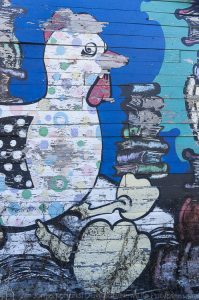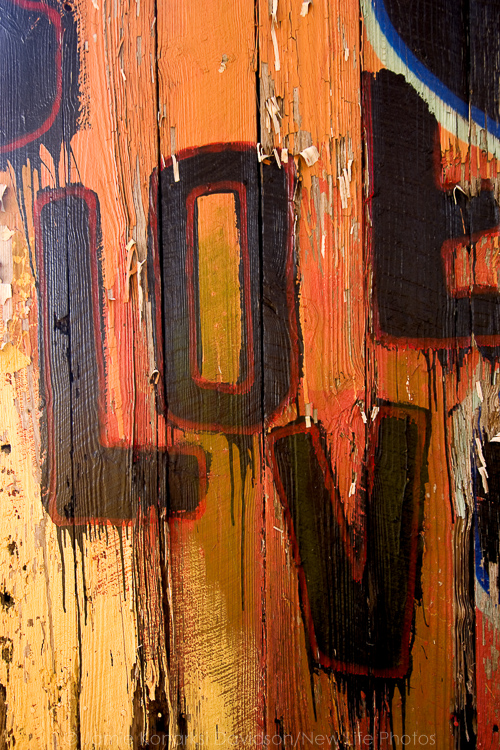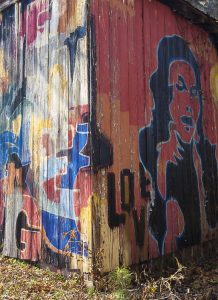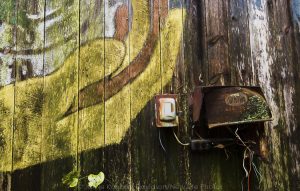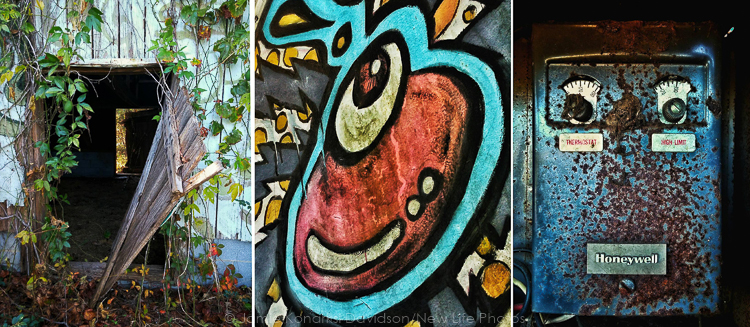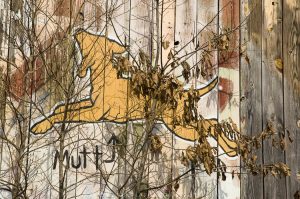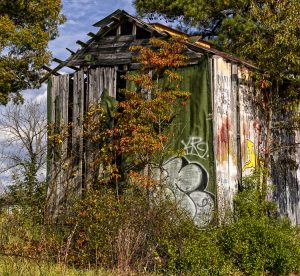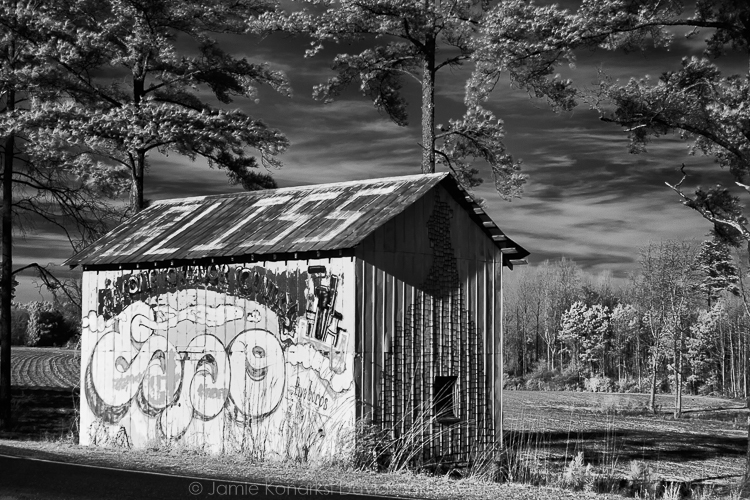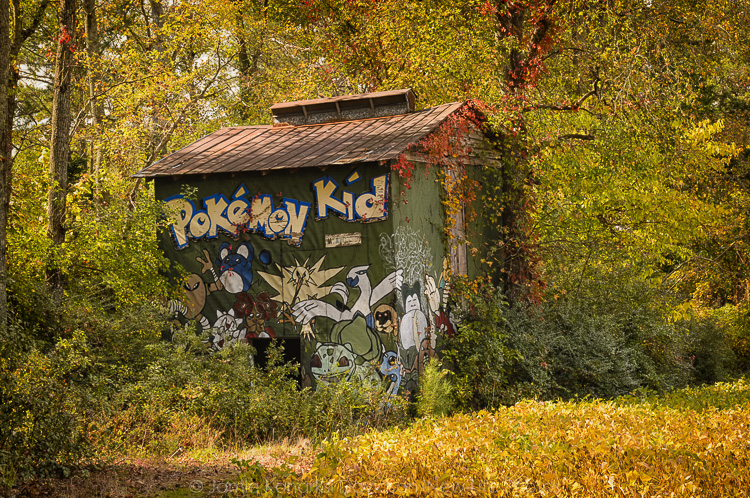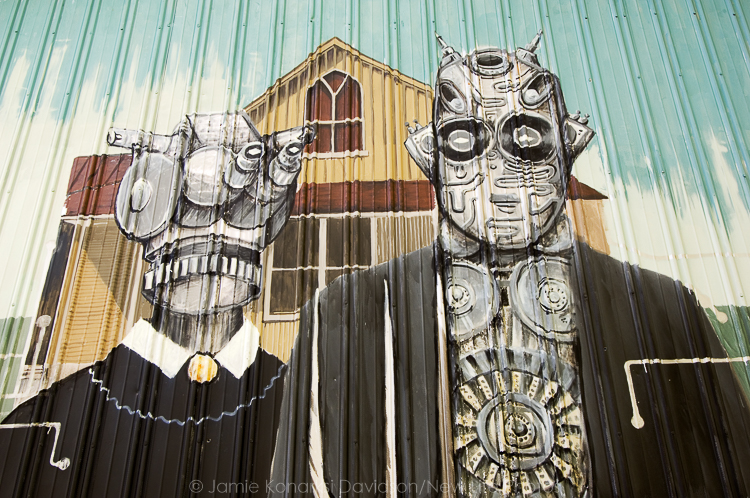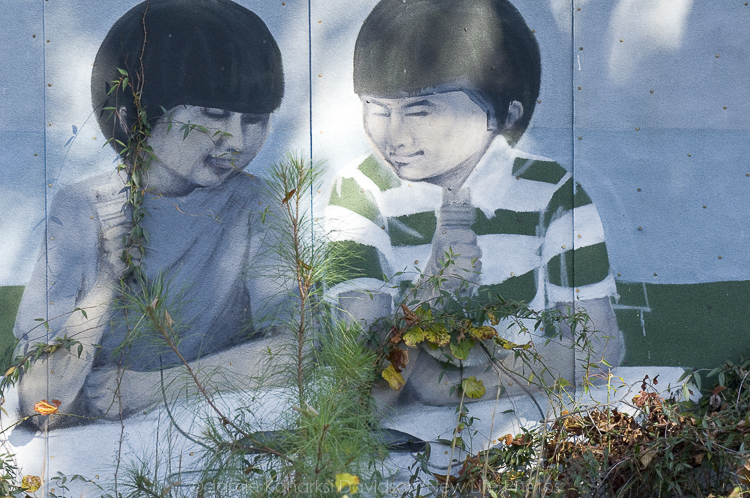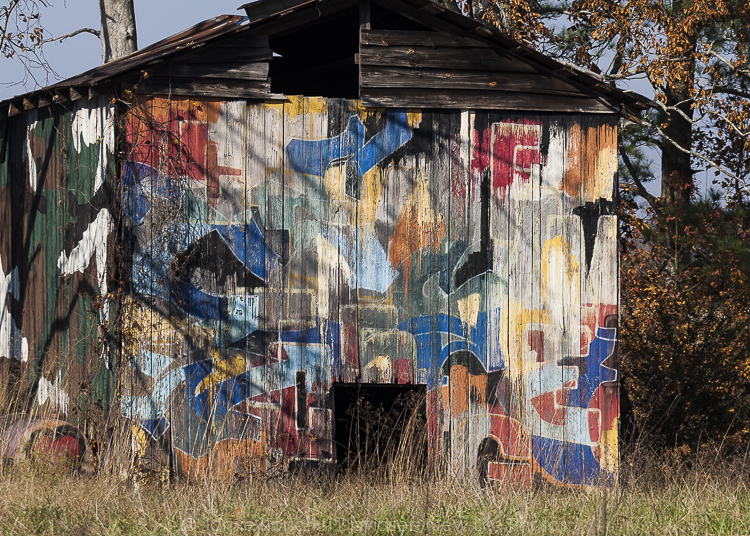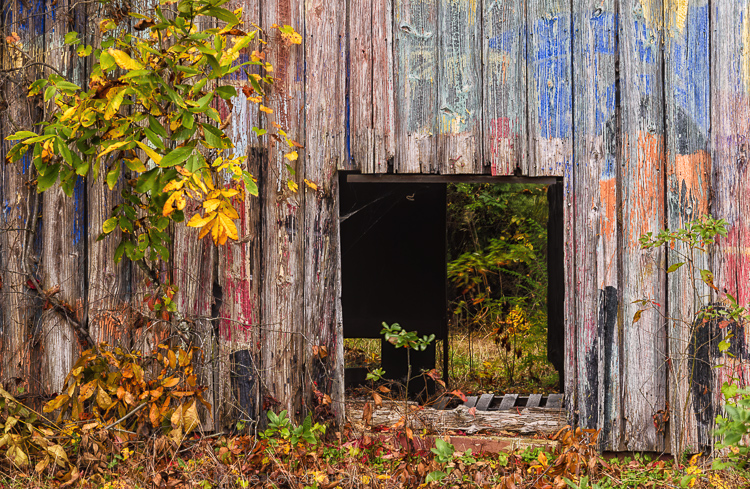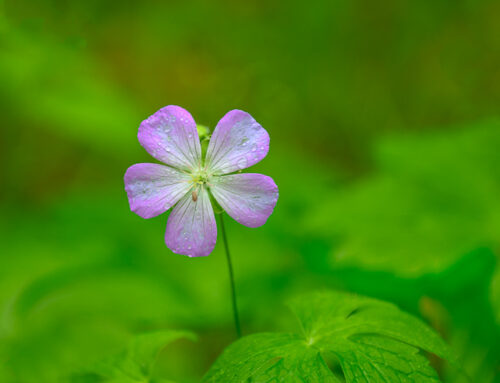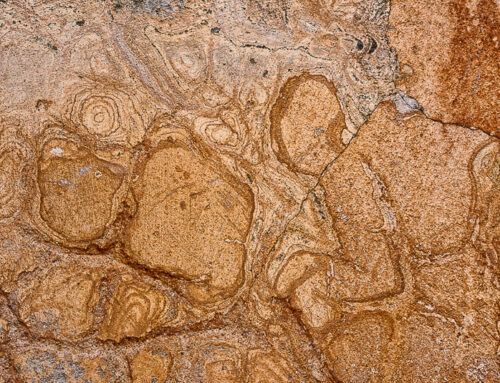They aren’t always beautiful. In fact, they’re sometimes plain. Yet, over and over and over again, they simply call your name.
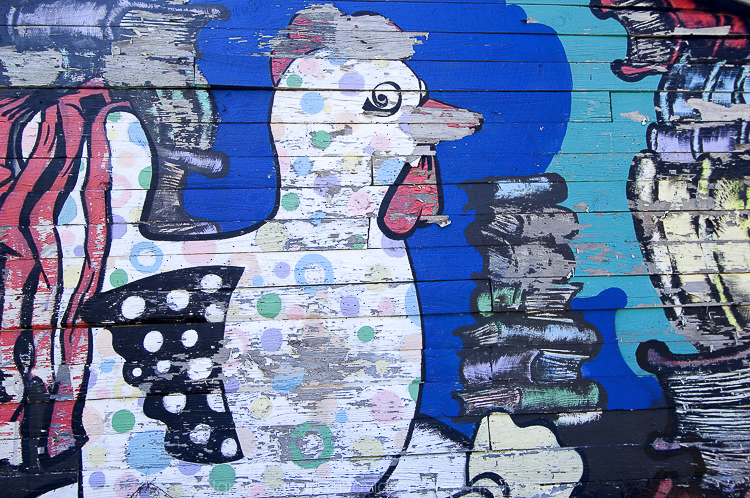
This is “Book Hen.” One of my favorites in 2004 (from a slide). It is now gone – building burned as a result of spontaneous combustion from damp hay.
If we think about “come-back” places, we will realize that we all have them. Some are across an ocean or continent, others cross-country. Some are just down the road and others even further. A “come-back” place is one that inexplicably draws you back and calls your name. Some of these go back to our much younger days, and most of them hold a special place in our hearts. The reasons why can be very different – memories, solace, excitement, peace, and so on.
EARLY COME-BACKS When I was growing up in a small town on Long Island, NY, I was a bike ride away from several places along the edge of the Great South Bay – ones that gave me a sense of peace and quiet. They were places to think and to be present with all my senses. What I remember about them was the cool, quiet breezes blowing through my hair, the smell of salt air wafting above the water, the lapping of small waves making their way to the shoreline. I remember the warmth of the sun on my face with eyes closed pointing up toward the sky. I remember a simpler time.
I’ve been away from that town for thirty-five years now, and the last time I went to see my childhood home, I had to count houses, and still wasn’t sure if I had it right. It had changed so much, and there was no house number on it. I suspect those long-ago come-back places are either no longer around or are so changed that I would not be able to find or recognize them if I did. So, I am happy and comfortable in remembering them, the person I was then, and the peace they provided and why I kept going back to them. They were a good beginning.
AND THEN, THERE ARE MY BARNS. I have a collection (growing) of “come-back” places. Each one holds my attention and brings me back for different reasons. You cannot imagine how many GPS pushpins are in my Garmin for “awesome” trees. They are everywhere. Why is that? And, I love old barns and buildings and farms and the rural landscape. But why? When I dig a little deeper into what makes each place resonate with me enough to create a “must return” attitude toward them, it’s clear that some of those reasons are rooted in my childhood and the experiences I had and their influence on me – even if I didn’t recognize or acknowledge the impact as it was happening. Something else, my “come-back” places are only good. I am not drawn back to revisit negative things of old.
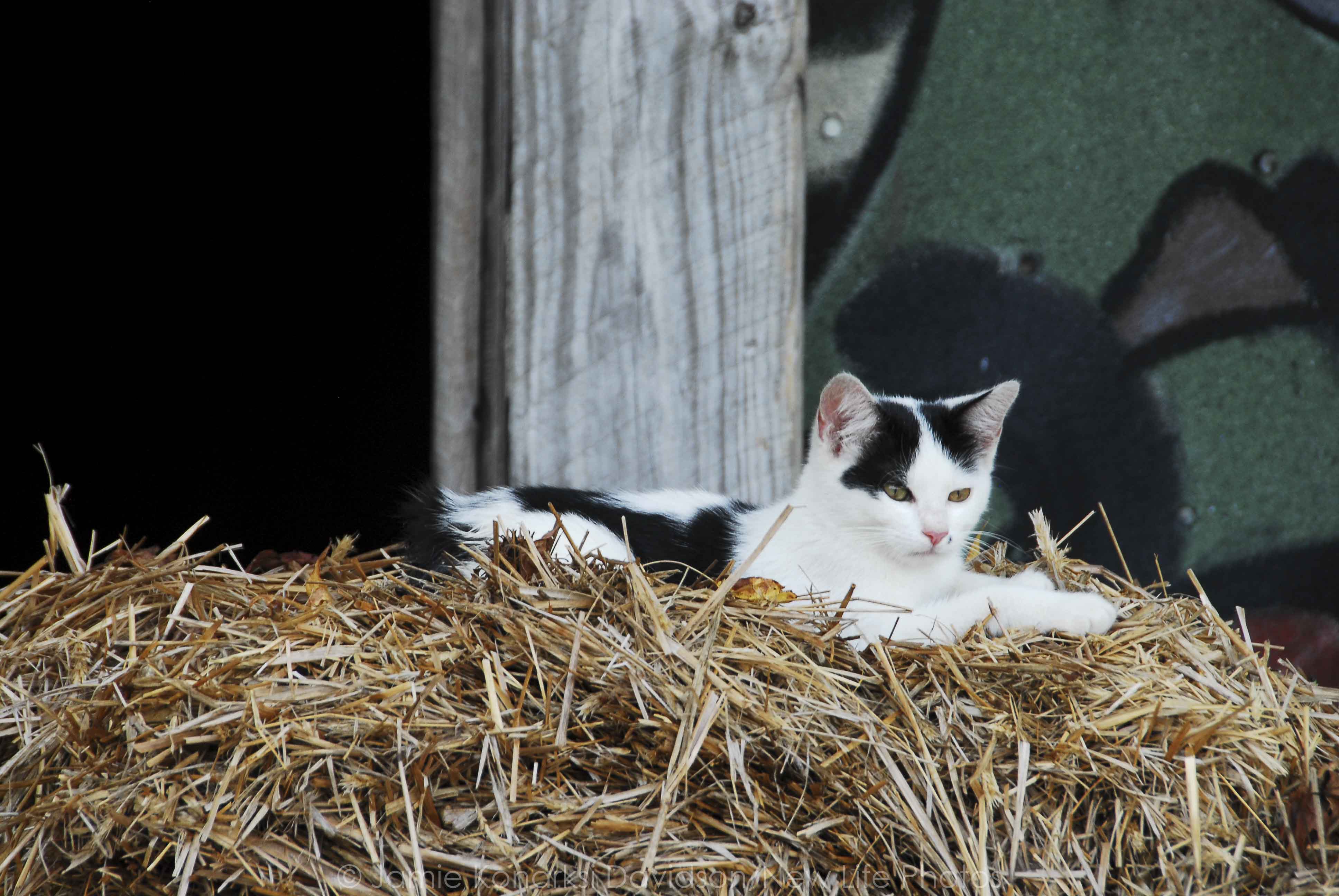
Meet “Cameron,” the little kitten we rescued along with her brother while visiting the barns. She just sat and watched us as we photographed. I still wonder what lucky people got the two of them. A rescue took them in for us after seeing how awesome they were.
So, these places draw on something below the surface, even when they are not inherently or obviously beautiful. Excellent example – MY BARNS – this wonderful place of the “not so beautiful” nature that continually calls me back to visit the barns just outside of Cameron, NC. I first “met” them and began photographing them as best I can remember in the summer of 2004. This was early in my photography journey, and I was excited to be introduced to new, different and quirky places off the beaten path and under the radar (still am).
I’ve been visiting and sharing my barns ever since. Why is that? I’ve figured it out. These barns resonate with my personal history, and they continually feed my desire to discover new things, beauty and something different in what others might easily and simply view as old and broken down. The barns challenge and inspire me. Each visit delivers something I haven’t noticed or seen before. Each visit reminds me that “my barns” – like me – will not be here forever. In fact, each visit brings news and discovery that one more is gone and sometimes forecasts perhaps the next one to go. Even as I make the two- hour trek several times a year, I know that someday all of them will be gone. I’m relatively certain that the “Barnstormers” will not be back to repaint the old or find new barns to paint. Very likely, this “come-back” place of mine will one day become a very fond memory, not unlike those places along the shoreline of the Great South Bay. The barns will no longer exist, but will be ever retrievable in my mind, memory and photographs. They are a piece of my life history.
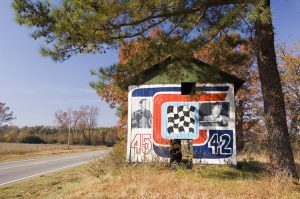
This side of the barn (now gone), I called “The Race Barn.” Many a group photo were taken in front of this.
THE BACKSTORY OF THE PAINTED BARNS OF CAMERON, NC. They had their start with a young local artist, David Ellis, in 1999, who organized a group of artists, The Barnstormers, from near and far came to Cameron and painted on almost all sides of at least seventeen barns and buildings, trucks and tractors and other farm equipment. The community rallied around the artist with food, lodging, supplies and enthusiasm. They returned, I believe, a few times, but have not been back since 2004, when I began my visits. Cameron is a small crossroads town in Moore County about eleven miles south of Sanford, known for its antique stores and semi-annual antiques street fairs than for the barns.
If you find yourself in Cameron (not on Sunday or Monday), you must have lunch at The Dewberry Deli & Soda Fountain, which is downstairs below The Old Hardware Antiques. As long as I’ve been visiting my barns, I’ve been coming to and bringing others to the Deli to enjoy the great food and unique, old-time atmosphere. If you must visit Cameron on Sunday or Monday, pack a picnic lunch.
WHAT’S SO SPECIAL ABOUT THESE BARNS? – Anyone who has been with me at the barns can tell you how passionate I am about these now much older, painted, faded, peeling, weather weary warriors of another time. In part, this passion comes from being a photographer and being attracted to things that attract my interest. These barns are perfect subjects for Wabi Sabi images – challenging anyone to find the art and beauty in decay. However, I believe my connection to them goes deeper and further back into my family history and influences from childhood.
My father grew up on a farm, and everyone in his large family worked it. His parents and my great-grandmother came to America from Poland. They were farmers. Farming then (and even now) is not an easy life. It requires long, long, long hours, hard work and an acceptance that the rewards reaped in part rely on a dependence of nature to provide the right amounts of sun and rain to produce a worthy harvest. It is my belief that most farmers farm because they share a passion for the land and what it provides, and they love what they do, and they are not afraid to work hard. I’ve never met a lazy, land-hating farmer, so that’s my take.
When my three sisters and I were growing up, we had what I remember to be a very large garden (felt like a mini-farm). Whether it was or not, it felt as I remember like it was as big as a football field. It probably wasn’t. We grew corn, potatoes, string beans, tomatoes, peas, eggplant, squash, cucumbers, strawberries, peppers and much more.
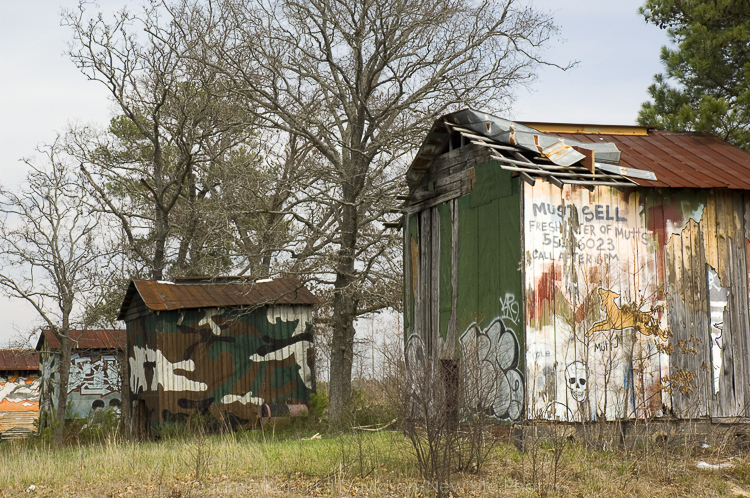
Long ago view of four of the barns in this section. Just this past year, the first barn disappeared. Vanished without a trace.
Each day, as the garden grew, my sisters and I would have to hoe and weed at least two rows each, pick whatever was ripe and ready, carry it “all the way back to the house” (such drama), and help do what needed to be done with it. We had to “work” the garden. I remember loving when the sweet peas and string beans were ready and usually tried to claim those rows (the “snacker” rows). I also remember hating the potatoes and their dry dirt harvest. We had to follow behind my father’s tractor as he plowed up the dirt to reveal those potatoes. No snacking and much harder, dirty work.
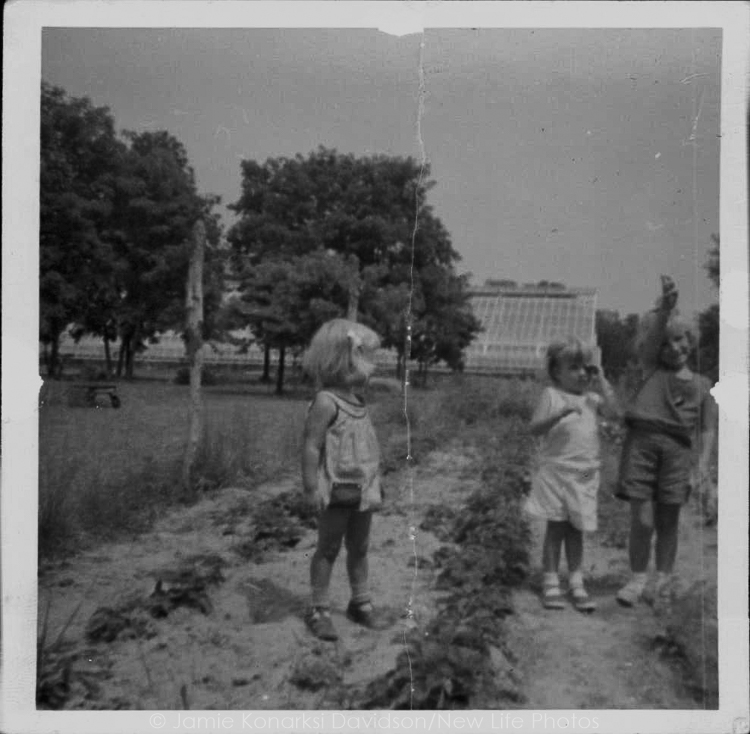
Sisters in the garden. Think this is where the potatoes grew. That’s me, wiping the sweat from my brow. (Notice the outfits and anklets. My mother made most of our clothes, too.)
I don’t think any of us really liked all those “hard hours” and work in the field. However, I do see now how those times influenced me and provided me with a strong work ethic and sense of pride and understanding the value of putting in the time. The work ethic of both my parents was instilled in me by way of example and experience, by being made to do what we would have preferred not to. We raised the garden not for fun, or to see what would grow, but to feed our family. My parents married at age 21. By the time they were 25, they had four girls to raise (and feed). I cannot imagine what that was like. I’ve never had children and didn’t marry until I was 43. The life I lead, in comparison, has been so very different. However, if I had been blessed with children, I know I would have made them “work” as well.
So, when I drive through rural areas of the state and country – through farmland – and see the barns and buildings that belong there, I am reminded of that part of my upbringing that helps me appreciate what those places, barns, buildings, trucks and tractors represent. For me, they illustrate hard work, a passion for the land, providing for families, a sense of pride and responsibility, and the knowledge and acceptance of the dependency on the whims of nature on the harvest.
My emotional and spiritual connection to these painted barns – my barns – goes deeper than the peeling paint, the grain of the wood and the leaning of walls from time and the elements. They bring me “home” on a level I have only in recent years figured out. Photographically, these barns just keep giving from an endless supply of potential in subjects, approaches and creative possibilities.
Do you have a “come-back” place (or many)? Somewhere you can’t help but going back to year after year or as often as possible? Think about what it is that makes you return … and why you can’t help but go back. The reasons may surprise you as you connect the dots. They may explain or confirm some things about you and your history, and may also give you new perspectives on these old, favorite places. Like me and “my barns, you might understand more fully why these places matter to you, and why they keep calling you back.
As for my barns, they are fading and falling and vanishing. Still, I will go until the last one falls …
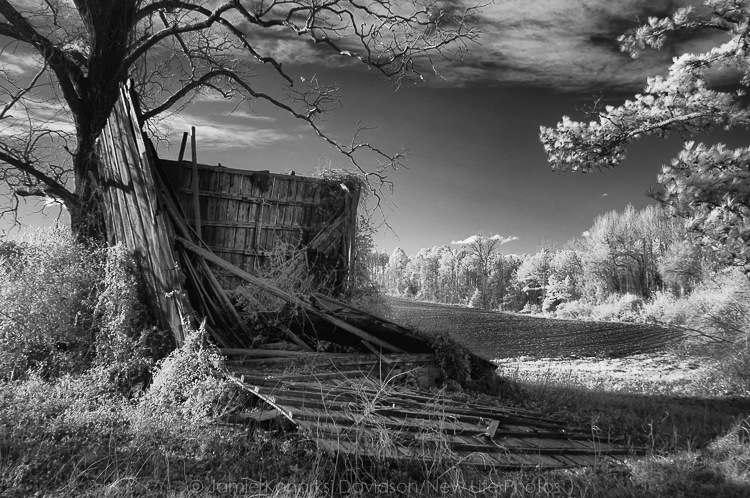
“Falling Down.” I knew when I took this image (infrared) that it would be the last time I would see it. I was right. This past year the four other barns that remained in this section either fell or were taken down.

